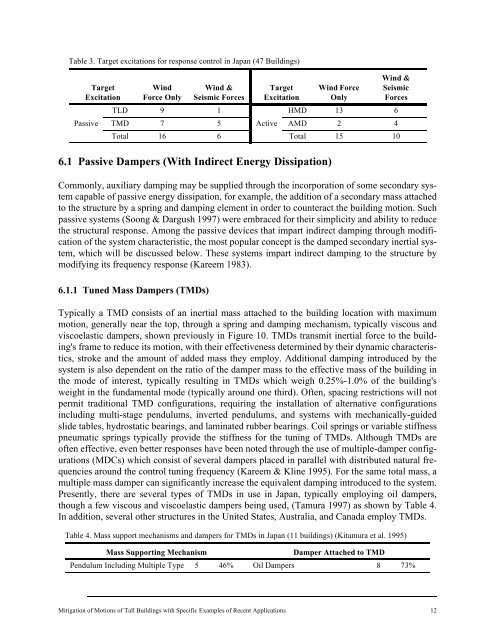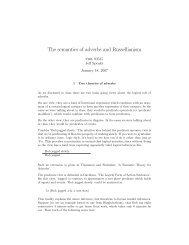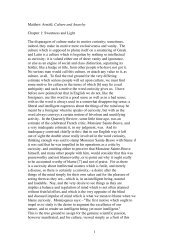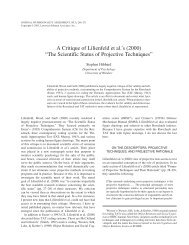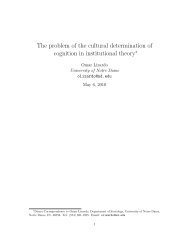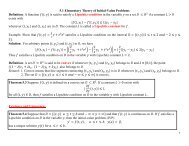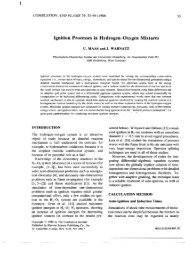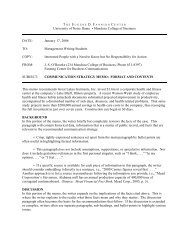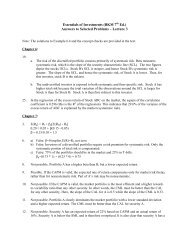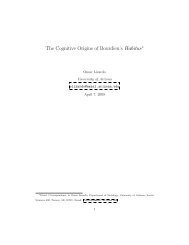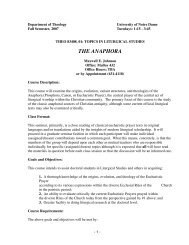Mitigation of Motions of Tall Buildings with Specific Examples of ...
Mitigation of Motions of Tall Buildings with Specific Examples of ...
Mitigation of Motions of Tall Buildings with Specific Examples of ...
Create successful ePaper yourself
Turn your PDF publications into a flip-book with our unique Google optimized e-Paper software.
Table 3. Target excitations for response control in Japan (47 <strong>Buildings</strong>)<br />
Target<br />
Excitation<br />
Passive<br />
Wind<br />
Force Only<br />
6.1 Passive Dampers (With Indirect Energy Dissipation)<br />
Commonly, auxiliary damping may be supplied through the incorporation <strong>of</strong> some secondary system<br />
capable <strong>of</strong> passive energy dissipation, for example, the addition <strong>of</strong> a secondary mass attached<br />
to the structure by a spring and damping element in order to counteract the building motion. Such<br />
passive systems (Soong & Dargush 1997) were embraced for their simplicity and ability to reduce<br />
the structural response. Among the passive devices that impart indirect damping through modification<br />
<strong>of</strong> the system characteristic, the most popular concept is the damped secondary inertial system,<br />
which will be discussed below. These systems impart indirect damping to the structure by<br />
modifying its frequency response (Kareem 1983).<br />
6.1.1 Tuned Mass Dampers (TMDs)<br />
Wind &<br />
Seismic Forces<br />
TLD 9 1<br />
Target<br />
Excitation<br />
Wind Force<br />
Only<br />
Wind &<br />
Seismic<br />
Forces<br />
HMD 13 6<br />
TMD 7 5 Active AMD 2 4<br />
Total 16 6 Total 15 10<br />
Typically a TMD consists <strong>of</strong> an inertial mass attached to the building location <strong>with</strong> maximum<br />
motion, generally near the top, through a spring and damping mechanism, typically viscous and<br />
viscoelastic dampers, shown previously in Figure 10. TMDs transmit inertial force to the building's<br />
frame to reduce its motion, <strong>with</strong> their effectiveness determined by their dynamic characteristics,<br />
stroke and the amount <strong>of</strong> added mass they employ. Additional damping introduced by the<br />
system is also dependent on the ratio <strong>of</strong> the damper mass to the effective mass <strong>of</strong> the building in<br />
the mode <strong>of</strong> interest, typically resulting in TMDs which weigh 0.25%-1.0% <strong>of</strong> the building's<br />
weight in the fundamental mode (typically around one third). Often, spacing restrictions will not<br />
permit traditional TMD configurations, requiring the installation <strong>of</strong> alternative configurations<br />
including multi-stage pendulums, inverted pendulums, and systems <strong>with</strong> mechanically-guided<br />
slide tables, hydrostatic bearings, and laminated rubber bearings. Coil springs or variable stiffness<br />
pneumatic springs typically provide the stiffness for the tuning <strong>of</strong> TMDs. Although TMDs are<br />
<strong>of</strong>ten effective, even better responses have been noted through the use <strong>of</strong> multiple-damper configurations<br />
(MDCs) which consist <strong>of</strong> several dampers placed in parallel <strong>with</strong> distributed natural frequencies<br />
around the control tuning frequency (Kareem & Kline 1995). For the same total mass, a<br />
multiple mass damper can significantly increase the equivalent damping introduced to the system.<br />
Presently, there are several types <strong>of</strong> TMDs in use in Japan, typically employing oil dampers,<br />
though a few viscous and viscoelastic dampers being used, (Tamura 1997) as shown by Table 4.<br />
In addition, several other structures in the United States, Australia, and Canada employ TMDs.<br />
Table 4. Mass support mechanisms and dampers for TMDs in Japan (11 buildings) (Kitamura et al. 1995)<br />
Mass Supporting Mechanism Damper Attached to TMD<br />
Pendulum Including Multiple Type 5 46% Oil Dampers 8 73%<br />
<strong>Mitigation</strong> <strong>of</strong> <strong>Motions</strong> <strong>of</strong> <strong>Tall</strong> <strong>Buildings</strong> <strong>with</strong> <strong>Specific</strong> <strong>Examples</strong> <strong>of</strong> Recent Applications 12


